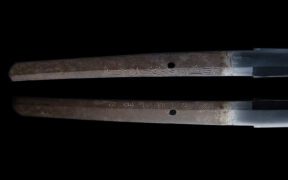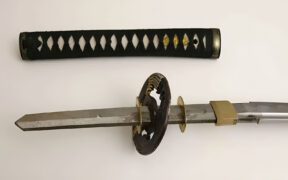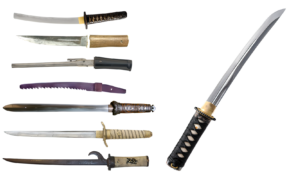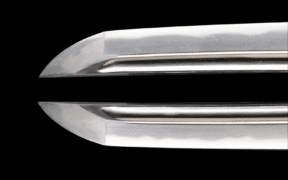Exploring the Different Types and Shapes of Nakago
NO AI USED This Article has been written and edited by our team with no help of the AI
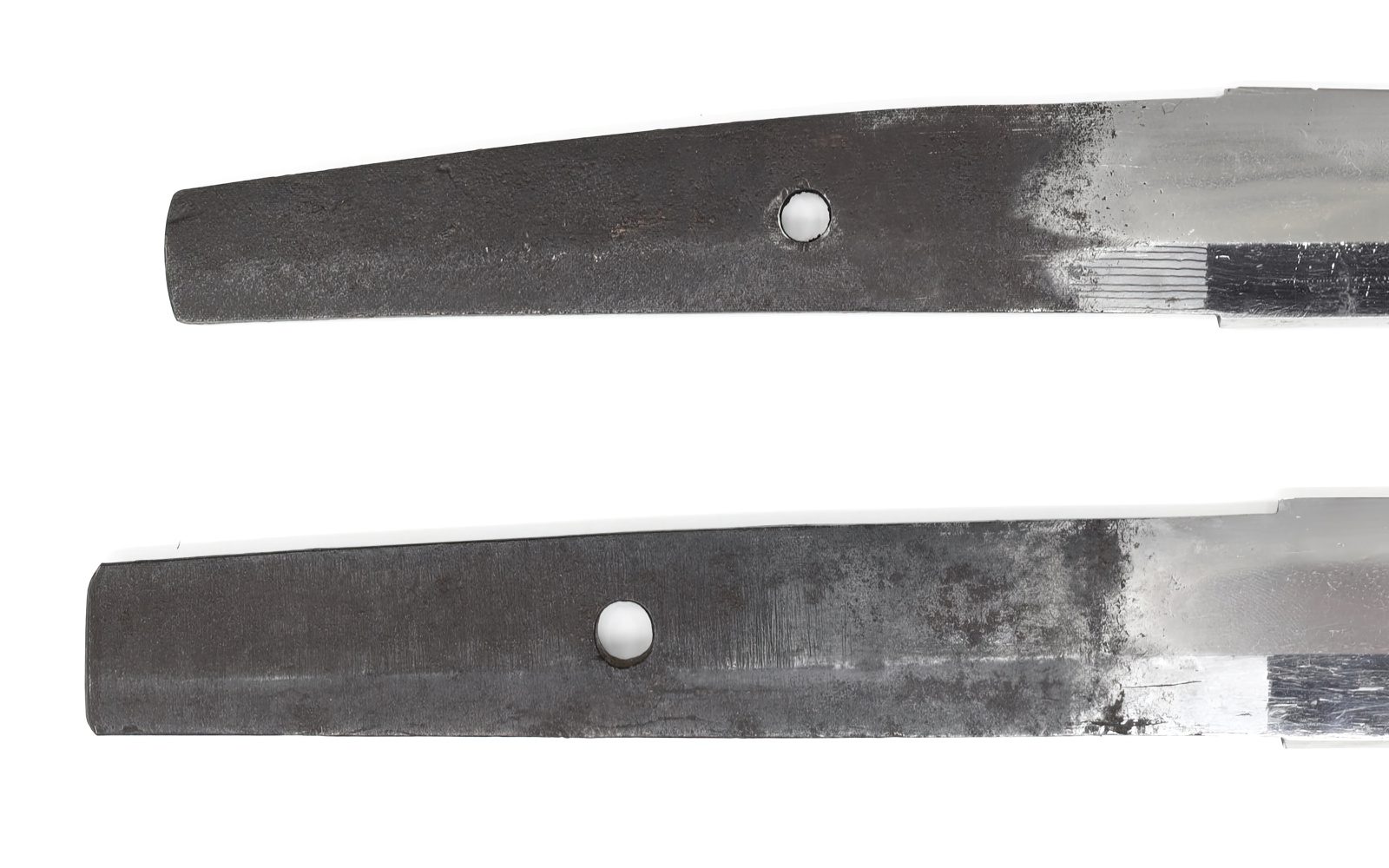
The nakago, or tang, is a key component in Japanese sword appraisal. Its shape reveals important information about the sword’s age and the period in which it was made. In this article, we’ll explore the various types and shapes of the nakago, including its butt end, the nakagojiri, and how they relate to different swordmaking schools and historical periods.
Various Forms and Shapes of the Nakago

The tang of a Japanese sword varies in shape depending on the production school and the period in which it was made. While most nakago have a standard, slightly tapered shape with a gentle curve, several unique types exist.
1. Kijimomo-gata
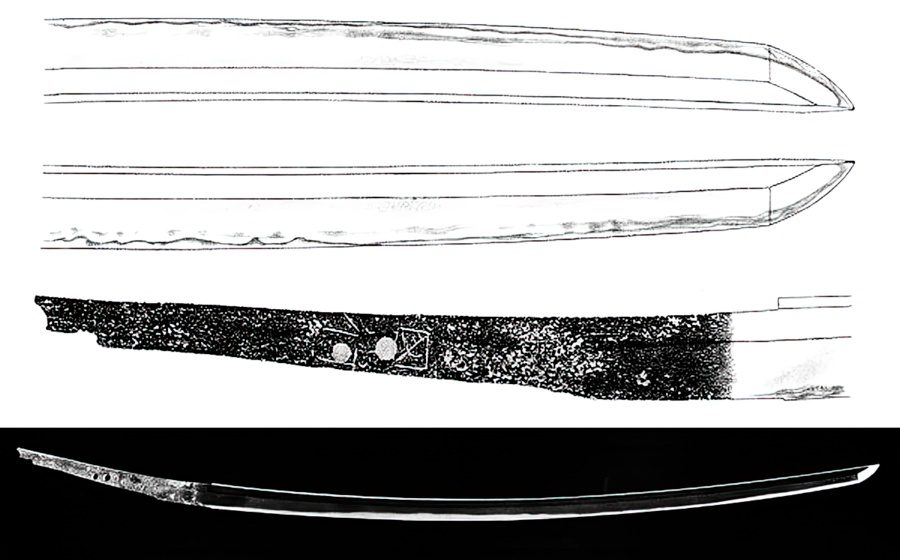
The term kijimomo literally means pheasant’s leg or thigh, a reference to this tang shape. It is characterized by a sudden narrowing on the edge side and remains narrow to the tip. Its shape allowed rivets to reinforce the old hilts. It is the oldest form of tang, often seen on tachi produced during the Heian and Kamakura periods.
2. Gohei-gata

The term gohei refers to the strips of paper attached to the sacred straw ropes often seen at Shinto shrines. The gohei-gata features an equal number of stepped notches on the tang. It was introduced by Shinto-era swordsmith Ise no Kami Kuniteru during the Edo period.
3. Sotoba-gata
The term sotoba is another word for stupa, the wooden grave markers seen in Buddhist cemeteries. The sotoba-gata is a tang shape resembling these grave markers turned upside-down. It has the same width from top to bottom and ends in a V-shape. It was mostly used by the Kongobyoe swordsmiths of Awa during the Muromachi period and Ise no Kami Kabayashi of Osaka.
4. Furisode-gata
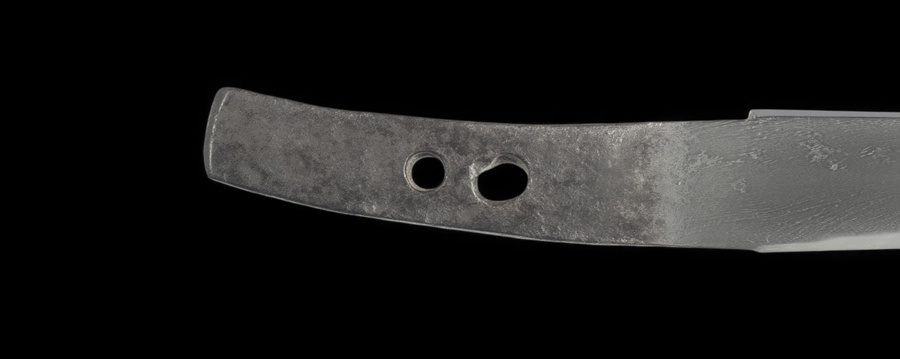
The term furisode refers to the long sleeves of a lady’s kimono, a reference to this tang shape. The furisode-gata features a shape similar to the draping of the sleeves and has a strong curvature. It was seen only on tanto produced during the Kamakura period by swordsmiths Awataguchi Yoshimitsu, Rai Kunitoshi, and Norishige.
5. Funa-gata

The term funa (or fune) literally means boat. The funa-gata resembles the profile of a Japanese fishing boat. It is short and stubby, and the line of the cutting edge is a deep outward bulge. This tang shape is associated with Masamune of Soshu and his school in the late Kamakura period, Sadamune, and Gō Yoshihiro.
6. Tanagobara-gata
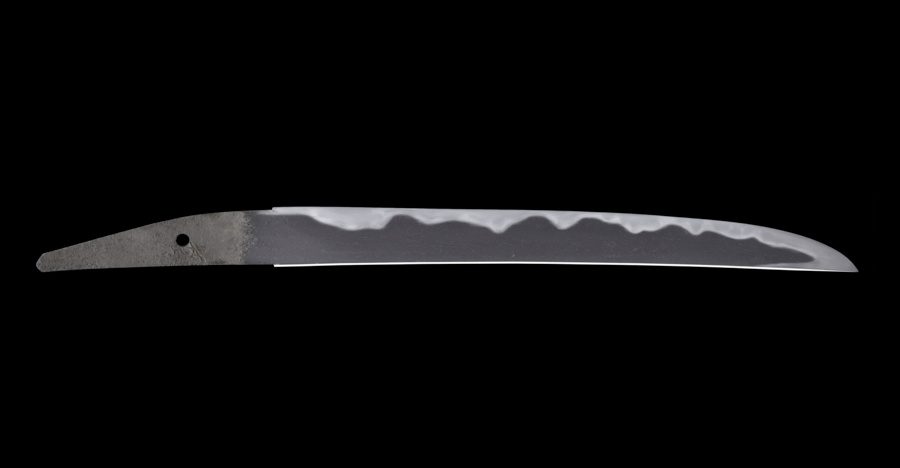
The term tanagobara means fish belly, though other sources translate it as grasshopper’s belly. The upper part of the tang features a bulge, which tapers gently into a narrow lower section. It was seen in the blades of Heianjo Nagayoshi, the Muramasa school, and the Shitahara school during the Muromachi period. This shape was mainly seen on tanto blades.
Different Types of Nakagojiri

The butt end of the nakago is called nakagojiri, which reflects the characteristics of each swordmaking school. When the blade is shortened, the nakagojiri is usually copied from the original.
The ends of a Japanese sword tang can be finished in several different ways:
1. Kiri (Straight)
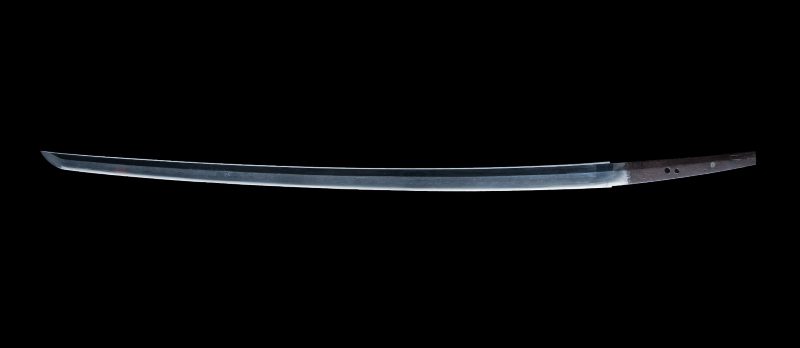
Kiri, also known as ichimonji, is characterized by an end that is cut off squarely in a straight line. It is often seen on shortened blades, and on swords of the Hosho school from the Kamakura period.
2. Kurijiri (Chestnut-Shaped)
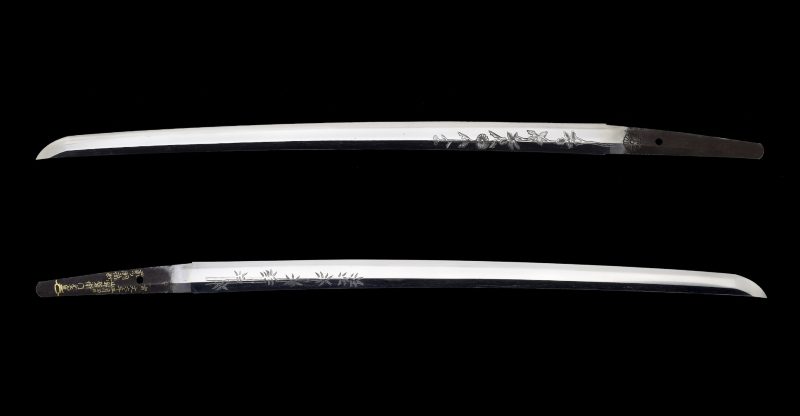
The kurijiri is a chestnut-shaped nakagojiri, with or without sharp corners. A kurijiri with a rounded end is the type most commonly seen in all periods. The wide variety is called kurijiri-hari, meaning expanded tang tail.
3. Ha Agari Kurijiri
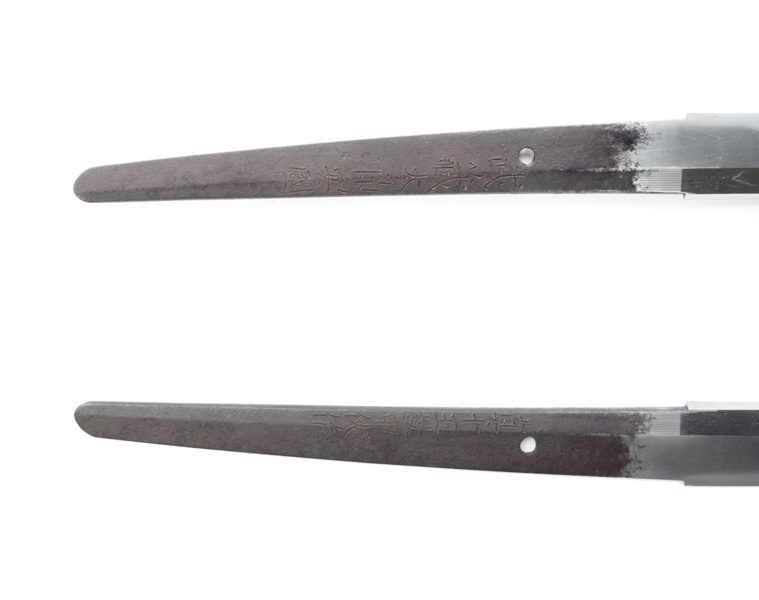
The ha agari kurijiri has a rounded end similar to the kurijiri. However, its cutting-edge side slants steeper than the mune (back) side.
4. Kengyo-jiri (Symmetrical V-Shape)
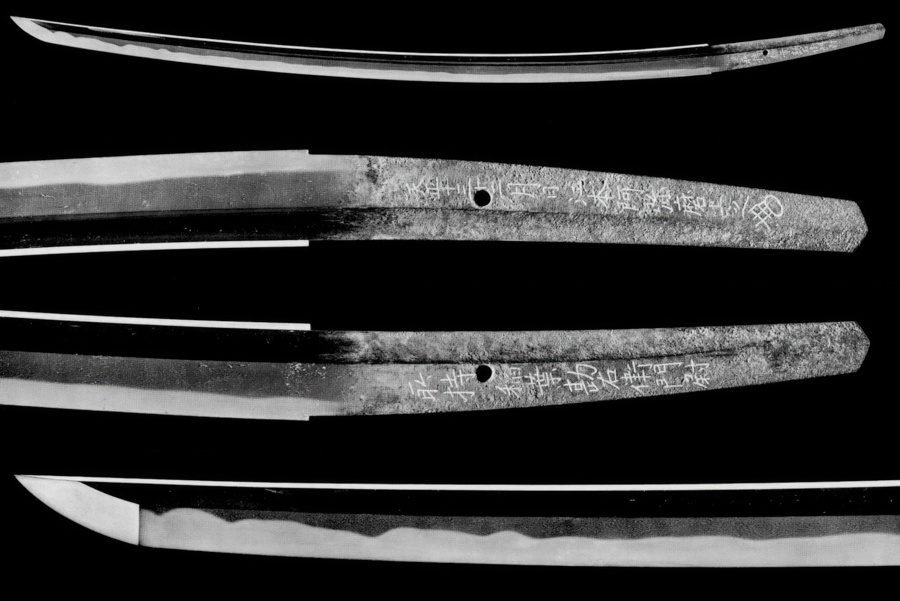
The kengyo-jiri has a sword-shaped end, featuring a V-shape with the nakago ridge at the center. Both lines of the bottom are straight, forming the pointed end. This nakago-jiri type is seen on Masamune blades, swords of Soshu tradition, and Shinto-era swords produced in the Soshu style.
5. Iriyamagata-jiri (Asymmetrical V-Shape)
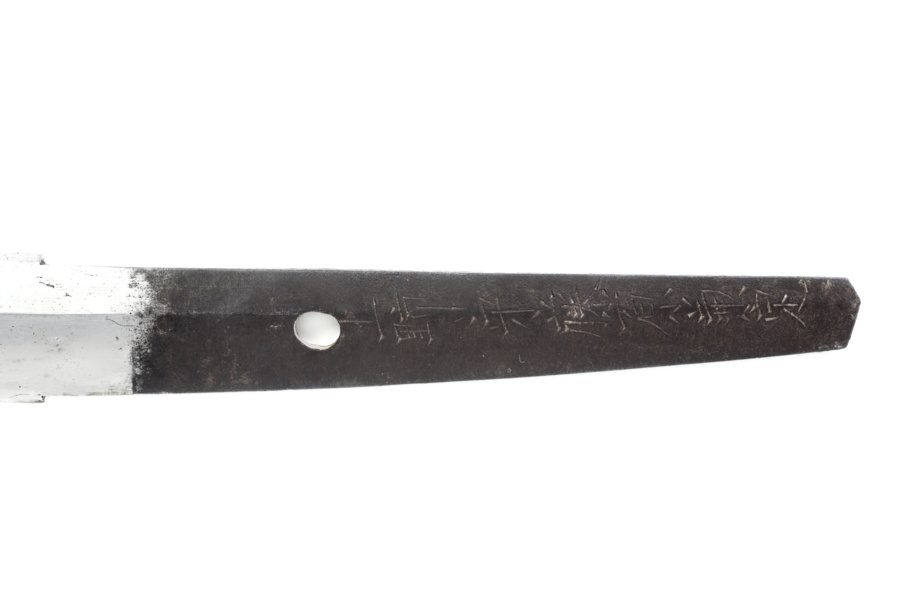
The iriyamagata-jiri features a V-shaped end, but the cutting-edge side is longer than the back (mune) side. It is similar to ha-agari kurijiri, but its two edges are linear and not bulbous. The edge side of the nakago has an acute angle bottom, while the other side has a slight upward angle to the back (mune) side. It is seen on swords produced from Yamato province schools, the Hokurikudo, and Shinto swords.
6. Kashū
The kashu is a variant of the iriyamagata-jiri, with a very steep or acute-angled cutting-edge side and almost straight on the back (mune) side. It is commonly seen on blades from Kaga (Kashu) swordsmiths, thus the name.
However, in reference to non-Kaga or non-koto-era blades, the term katasogi-nakago, meaning half-removed tang, is used. It is the more appropriate term when describing some blades of Yamato Shikkake school.
